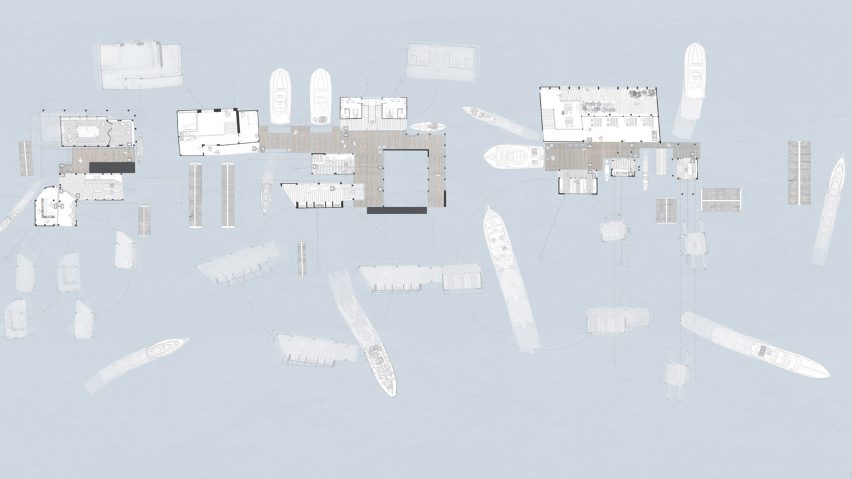
Norwich University of the Arts presents ten architecture and interior design projects
Dezeen School Shows: an architecture project using reclaimed materials is included in Dezeen's latest school show by students at Norwich University of the Arts.
Also included is a renovated bathhouse in London and the adaptive reuse of a red brick pumping station in Norfolk, UK.
Norwich University of the Arts
Institution: Norwich University of the Arts
School: Architecture and Interior Design
Course: BA (Hons) Architecture and BA (Hons) Interior Design
Tutors: George Themistokleous, Marco Fiorino, Romanos Tsomos, William Chen and Ben Salter
School statement:
"The Architecture and Interior Design Programme at Norwich University of the Arts is fully immersed in the creative environment of the university's other spatial and design practices.
"Architecture and interior design are sites of experimentation, incorporate transformations and embrace new techniques, and perform a critique of the disciplines through projects and makings that consider the role and responsibility of creative spatial practices in the city, in society, and on the planet.
"Students at Norwich University of the Arts develop their specialism in a context of multidisciplinary dialogue, creative collaboration and technological innovation, to prepare themselves for a critical practice that is professionally competent, experimental and innovative, ethically and environmentally responsible, and a critical agent of spatial transformation.
"The architecture projects have inhabited the Suffolk coast, connecting built environments, landscapes, histories, and memories.
"The projects ranged from the reuse of a former bomb ballistic laboratory to addressing the challenges of seaside towns affected by rising sea levels and aggressive cliff erosion, re-articulating the relationships between local environmental conditions and global issues of concern.
"The projects examined the impact of environmental and social degradation on communities and individual human and non-human bodies, proposing architectures that probed and questioned issues of social inequality, environmental neglect and nonhuman exclusion.
"The interior design projects renovated and repurposed existing buildings, considering individual, communal and wider societal needs to propose transformative spaces that considered notions of wellbeing, inclusion and responsible design."
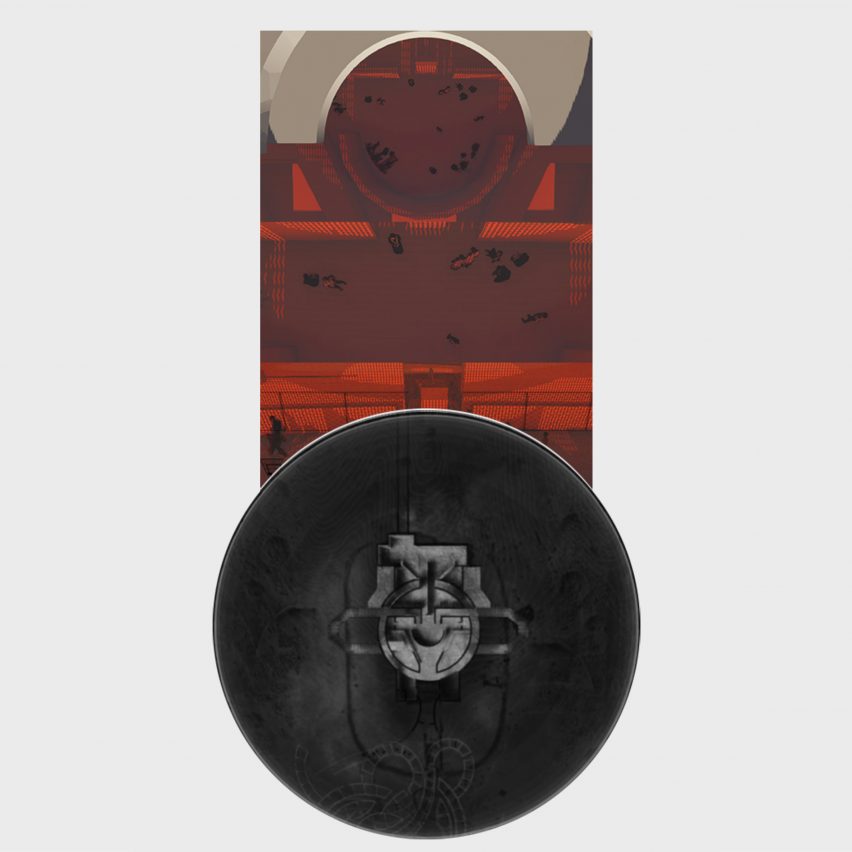
Uneven Ground by Astrid Kim
"Uneven Ground is a speculative project for a detainee centre on the island of Orford Ness in Suffolk – an uncompromising socio-political critique of a crypto state apparatus that dehumanises groups of people to justify oppressive control and pursue ethnic purity.
"When confronted with 'other' bodies the state's reflex is to regulate, surveil and dominate – this systematic dehumanisation of people facilitates their treatment as military pawns rather than human beings – is this dystopia or reality?
"Italian philosopher Giorgio Agamben observed that in Ancient Greek, two different words were used to refer to what we call life: 'zoe', the biological fact of life, and 'bios', the form or manner in which life is lived.
"For Agamben, the loss of this distinction obscures the fact that in a political context, 'life' refers more or less exclusively to the biological dimension (zoe), and implies no guarantees about the quality of the life lived.
"'Bare life' gives priority to the biological fact rather than the way a life is lived and can be lived; 'life' is thus stripped of its possibilities and potentialities."
Student: Astrid Kim
Course: Architecture
Email: astridkim496[at]gmail.com
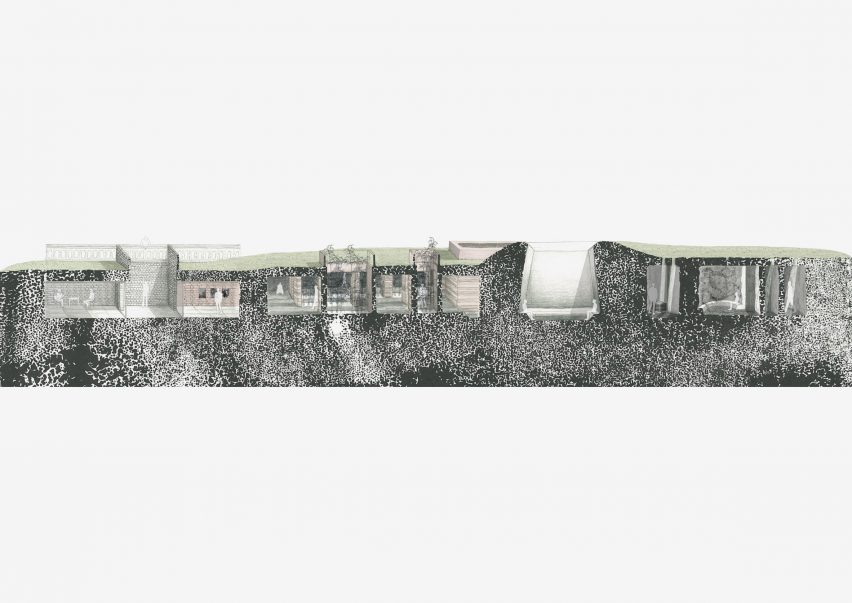
The Insect Swarm at Somerleyton Hall by Rozanna Lynch
"Somerleyton Hall in Suffolk is surrounded by 12 acres of gardens and is often presented as a picturesque retreat.
"However, my experience of swarms of insects – wasps, mosquitoes and moths – during my visit differed from its idyllic image.
"Inspired by The Rings of Saturn by W G Sebald, I investigated the relationship between the existing historical structures and greenhouses, the man-made and natural elements and the insects nesting in built spaces.
"The project exaggerated these conditions, forcing visitors to experience a series of unnatural 'habitats' that oscillate between claustrophobic spaces and open landscapes – the proposed underground museum is disguised as an extension to the site, mirroring the landscape garden above.
"Visitors entering this mine-like interior feel as if they had been buried alive – in the underground space, they observe vegetation folding into the underground lightwells and deer trampling over the glass surfaces.
"The project ironically questions the very division between nature and culture."
Student: Rozanna Lynch
Course: Architecture
Email: rozannalynch[at]outlook.com
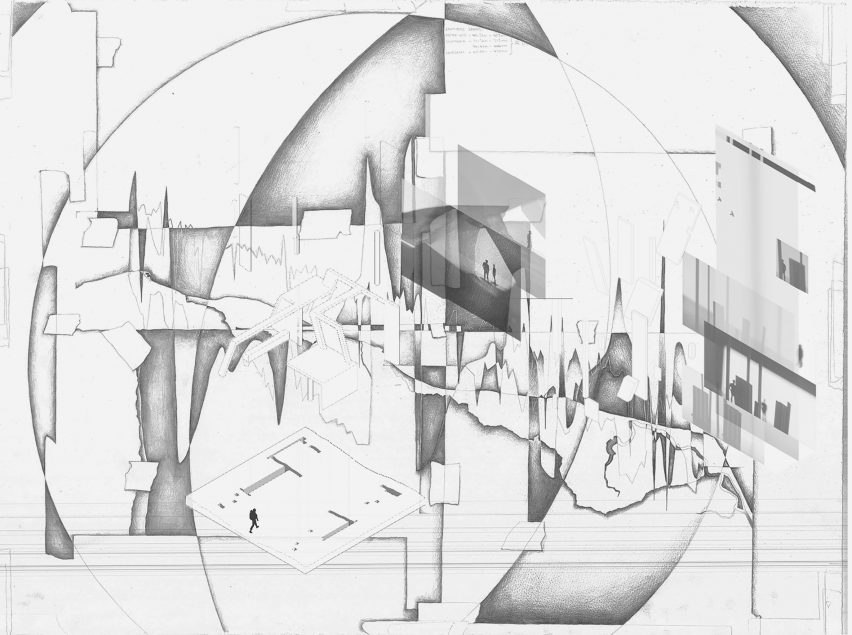
Crossed Paths by Cian McCahill
"Inspired by W G Sebald's journey in Rings of Saturn, my project reflects my own walk through Suffolk.
"Over two days, I traversed more than 70 kilometres, stayed in a shared space with other lone travellers and documented my experience through drawings and film.
"Fascinated by the solitude experienced on such a journey, I drew inspiration from lighthouses as isolated beacons mirroring the solitary existence of their keepers and from individuals renowned for their solitary lives, such as hermits, nomads and stylites.
"Identifying three types of spaces one would occupy on a walk similar to my own, the project culminates in a vision to populate abandoned farm buildings along my route with short-stay accommodation pods – these pods would emulate the identified spaces: 'the boundary', 'the natural corridor' and 'the space occupied with an/the other'.
"The pods would be arranged in a forest-like spatial organisation, with the space in between informing a communal area that blurs acoustic and visual relations, evoking the feeling of being alone yet visible to others, fostering a unique blend of solitude and community where the presence of others is felt but their activities remain intriguingly ambiguous."
Student: Cian McCahill
Course: Architecture
Email: cianmccahill[at]gmail.com
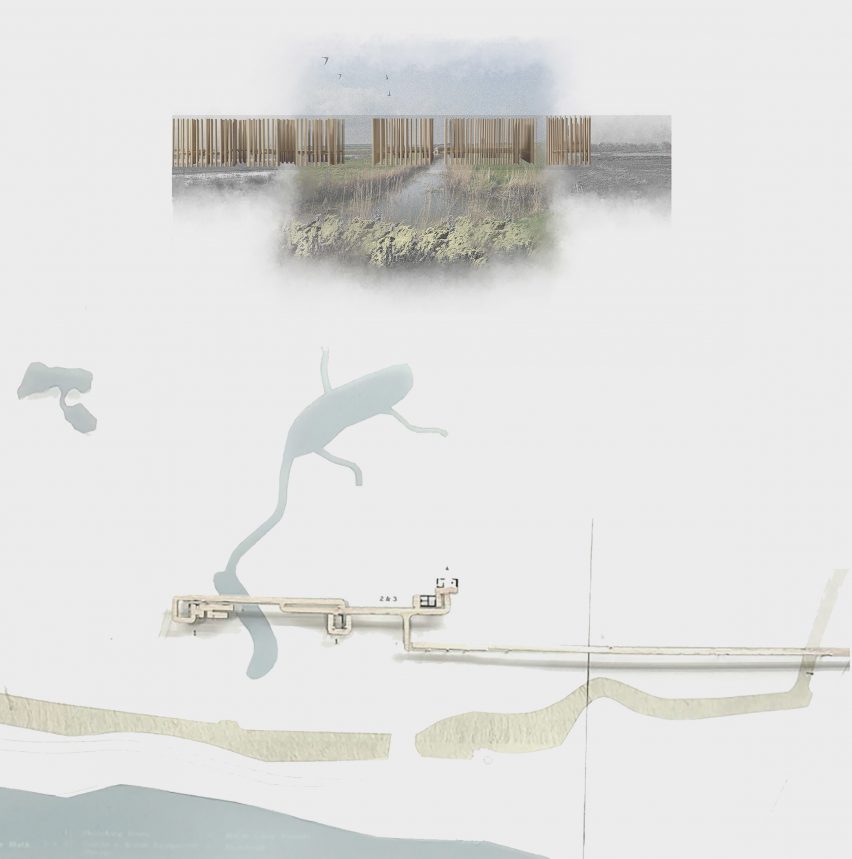
Wings of Southwold by Melissa Montallana
"The growing threat of rising water levels looms over Southwold's delicate ecology, where the interplay of water and land creates a fragile imbalance of natural habitats and human interventions.
"Through the careful curation of viewing pavilions, my scheme choreographs mimetic relations between humans and wildlife, with a network of boardwalks that integrate birdwatching huts and meditation rooms.
"Drawing inspiration from the murmuration of birds, the architectural plan traces the lines of flight of birdwatching, while the flat reeded marshland finds expression in a series of lightweight timber columns.
"As visitors traverse the flat landscape along the walking trail, they discover Southwold's panoramic vistas through openings that frame the sporadic vertical landmarks.
"The project seeks to touch the ground lightly, gently balancing human activity with the surrounding ecosystem, to ensure the preservation of Southwold's natural beauty for generations to come."
Student: Melissa Montallana
Course: Architecture
Email: villanuevad1senyos[at]gmail.com

Assemblage of Boundless Wall by Joshua Rogers
"This project investigates the (dis)assemblage of the medieval ruins of Dunwich, Suffolk, and proposes a moveable stonemasonry school that retreats from the cliff edge as the sea erosion progresses.
"The project began with an examination of the stone enclosures of pastured fields used to contain grazing animals such as cows and sheep.
"Dunwich's landscape was chosen as the project site for its multiple boundaries, encompassing both the confining stone enclosures and the shifting edges of the cliffs – my investigation revealed how the site is continuously eroding, and little of its original structures still stand.
"To protect the extant ruins, the project renegotiates the boundaries of the site, devising a process that migrates them away from danger – existing walls are disassembled and their stone fragments are relocated to safer locations, where they are (re)assembled.
"The boundless walls assemblage process informs the activities of the school of stonemasonry proposed for the site: the work of the school is not only to protect the ruins from cliff erosion but also to train, reskill and promote local craftsmanship – stonemasonry trainees live on site, in living pods that move with the ruins, activating a constantly shifting ruinscape."
Student: Joshua Rogers
Course: Architecture
Email: joshrogers271[at]gmail.com
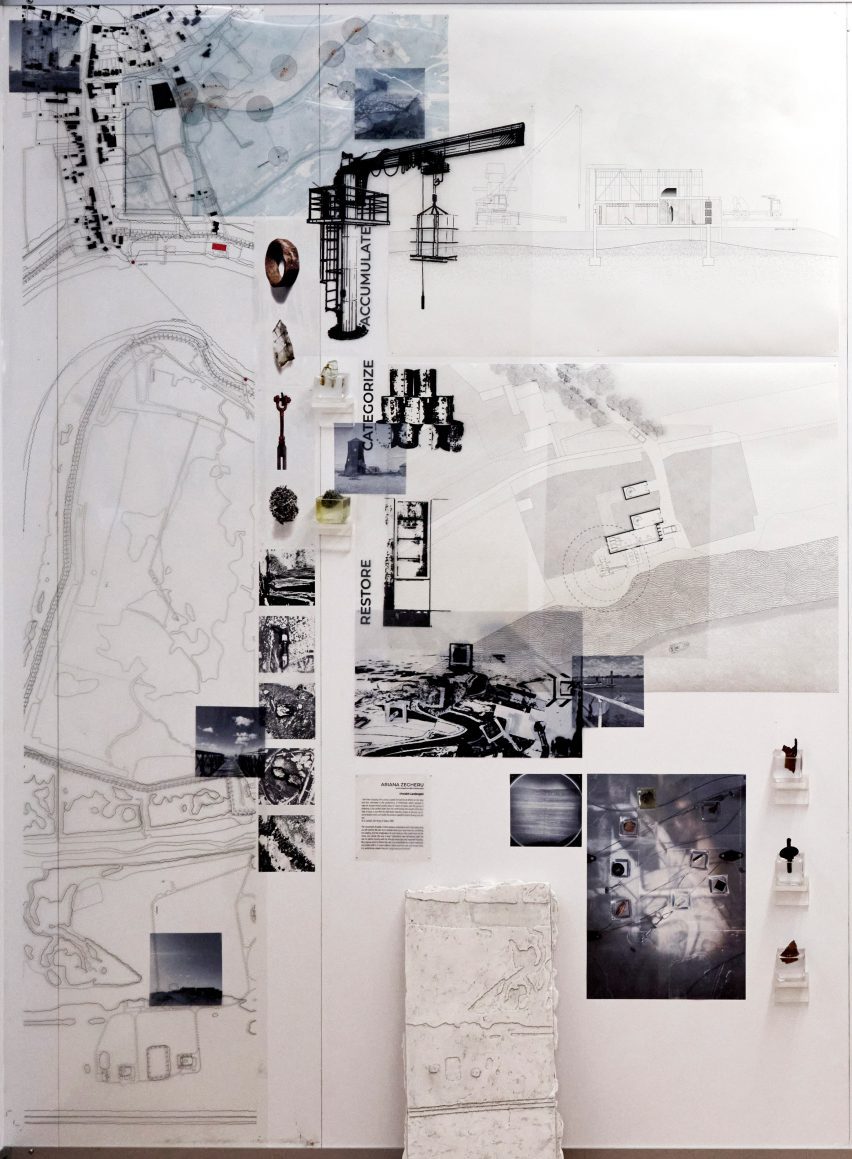
Unstable Landscapes by Ariana Zegheru
"The movement of waste in time remains embedded within the debris that are left behind – we can try to restore what once was there by combining the existing and the imagination of one's memory.
"Yet, it will never be the same; one, whole – but was it ever?
"Orfordness was left behind after the war, its debris moving with the shingle landscape and repeated flooding.
"My proposal aims to restore the site and rehabilitate the violent memories associated with it – a crane collects debris from the river and moves them to a warehouse, where they are categorised and restored."
Student: Ariana Zegheru
Course: Architecture
Email: arianazegheru[at]outlook.com
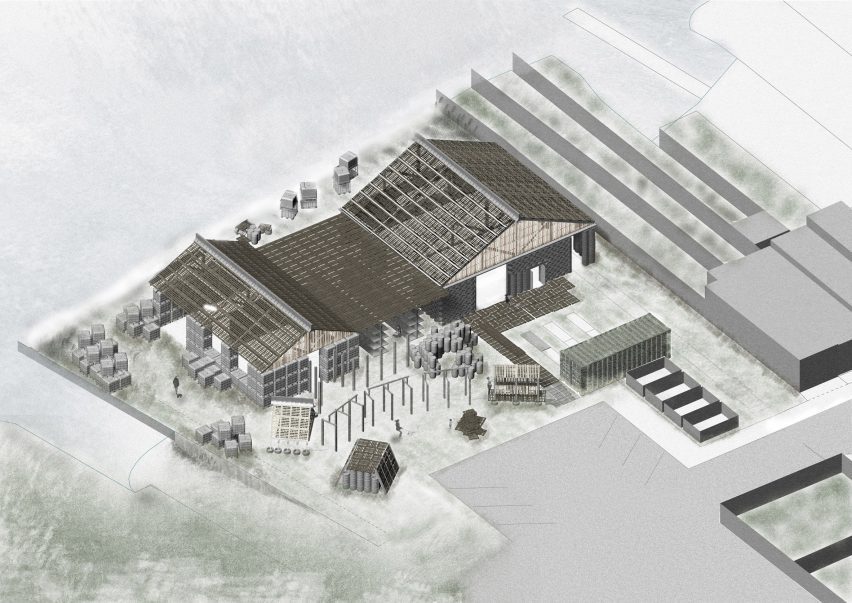
Lowestoft's Last Things by Ghea Remoroza
"My work focuses on repurposing discarded materials by creatively, transforming them into viable components for architectural structures.
"This approach not only emphasises the potential of sustainable design but also questions traditional uses of waste, and utilises these components to make structures that are appealing to the public through their playful and unexpected transformation.
"Through my projects, my aim is to demonstrate that what is frequently disregarded may be reinterpreted as something useful and beautiful, advocating a more eco-friendly and resourceful approach to design."
Student: Ghea Remoroza
Course: Architecture
Email: gheamay.remoroza[at]gmail.com
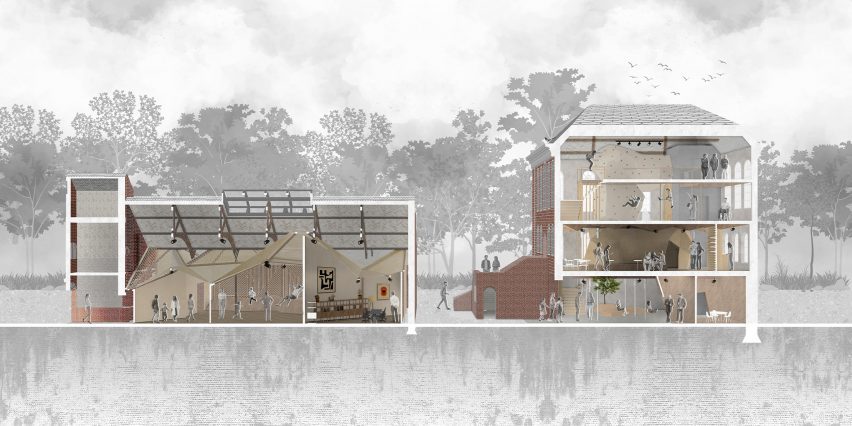
The Brickhouse by Desmond Lau Chak Koi
"Trowse Pumping Station in Norwich, UK, was constructed between 1865 and 1871 to pump sewage using gravity and ejection pumps.
"This piece of urban infrastructure played a vital role in keeping Norwich's water free from sewage and cholera during the Victorian era.
"Desmond's project reclaims the civic relevance of this tall red and black brick building, reinventing the former pumping station as an urban activity centre.
"The redesigned Brickhouse aims to offer the local community a platform to communicate through shared experiences, helping to foster a sense of connection with others through shared activities.
"The design solution delves into the intricate interplay between nature and man-made materials, seeking to repurpose and reimagine their connection to nurture a sense of togetherness."
Student: Desmond Lau Chak Koi
Course: Interior Design
Email: thedesmondlau[at]gmail.com
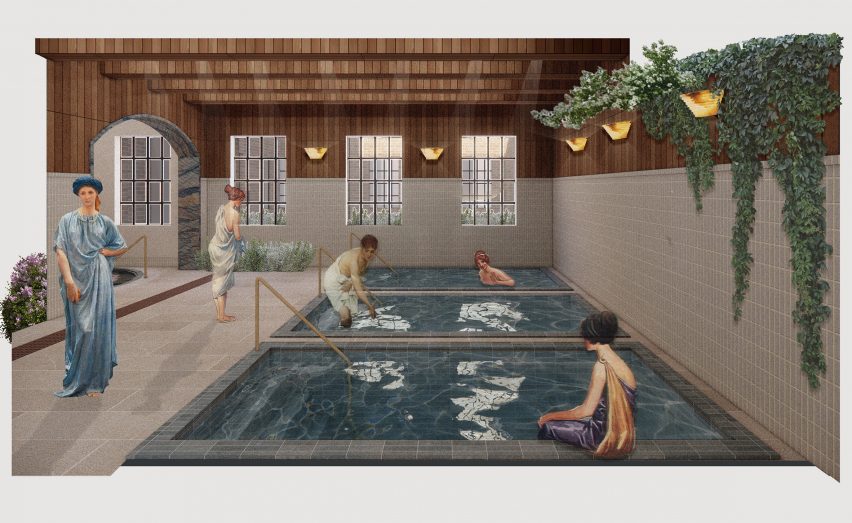
Balnea: A Prescribed Space by Lucy Bristow
"The Ladywell Tower Baths in Lewisham, London, built in 1884 by architects known for their municipal baths, is an iconic building within the community.
"The baths became a community centre before becoming vacant and derelict since 2004 – Lucy's project is a response to the spreading stress epidemic which is linked to 90 per cent of illnesses and where thousands suffer from chronic burnout having no space to go to heal.
"The project explores 'Sanitas per Aquam' which translates to 'health through water' regarding the ritual of bathing through the redevelopment and redesign of public bath houses, bringing them into the 21st century of healthcare to be public-centred, health-based design interventions to reduce stress.
"Using associations with water to decrease cortisol, blood pressure and heart rates, the refurbishment channels this foundation to evolve into a third carer space that combines a contemporary health and wellness centre with public baths, sensory spaces and rehabilitation rooms which allow users agency over their treatment.
"Thus, a creation of a space to be used as a prescription for healing."
Student: Lucy Bristow
Course: Interior Design
Email: lucy[at]stowestudio.co.uk
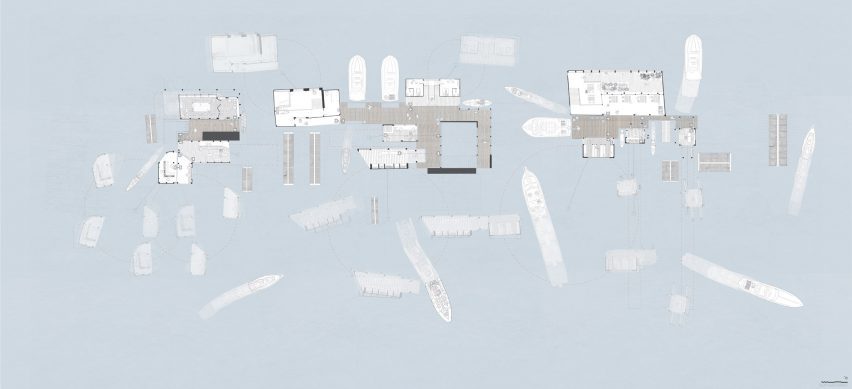
Tidal Adaptations by Elliott Hart
"Southwold Harbour on the River Blyth in Suffolk has developed organically through the everyday activities of its inhabitants.
"Marked by small fishermen huts and moorings along the muddy riverbank, the site faces an impending threat from rising sea levels – projections indicate an annual water level rise of 1.1 per cent, signalling potential submersion within the next 50 years.
"This historically significant fishing port runs the risk of vanishing – to safeguard the harbour amidst climatic changes, I propose the establishment of a flood-resilient environmental research centre alongside a fishing marketplace.
"This innovative hub will consist of small huts, reminiscent of the existing ones, positioned on a raft system: in times of flooding, these individual units will rise with the water and each hut will be equipped with a self-regulating mechanism, allowing autonomous floating and connection with others.
"This adaptable research centre will accommodate future modes of inhabiting the harbour, ensuring its enduring resilience in the face of environmental change."
Student: Elliott Hart
Course: Architecture
Email: elliotthart101[at]gmail.com
Partnership content
This school show is a partnership between Dezeen and Norwich University of the Arts. Find out more about Dezeen partnership content here.